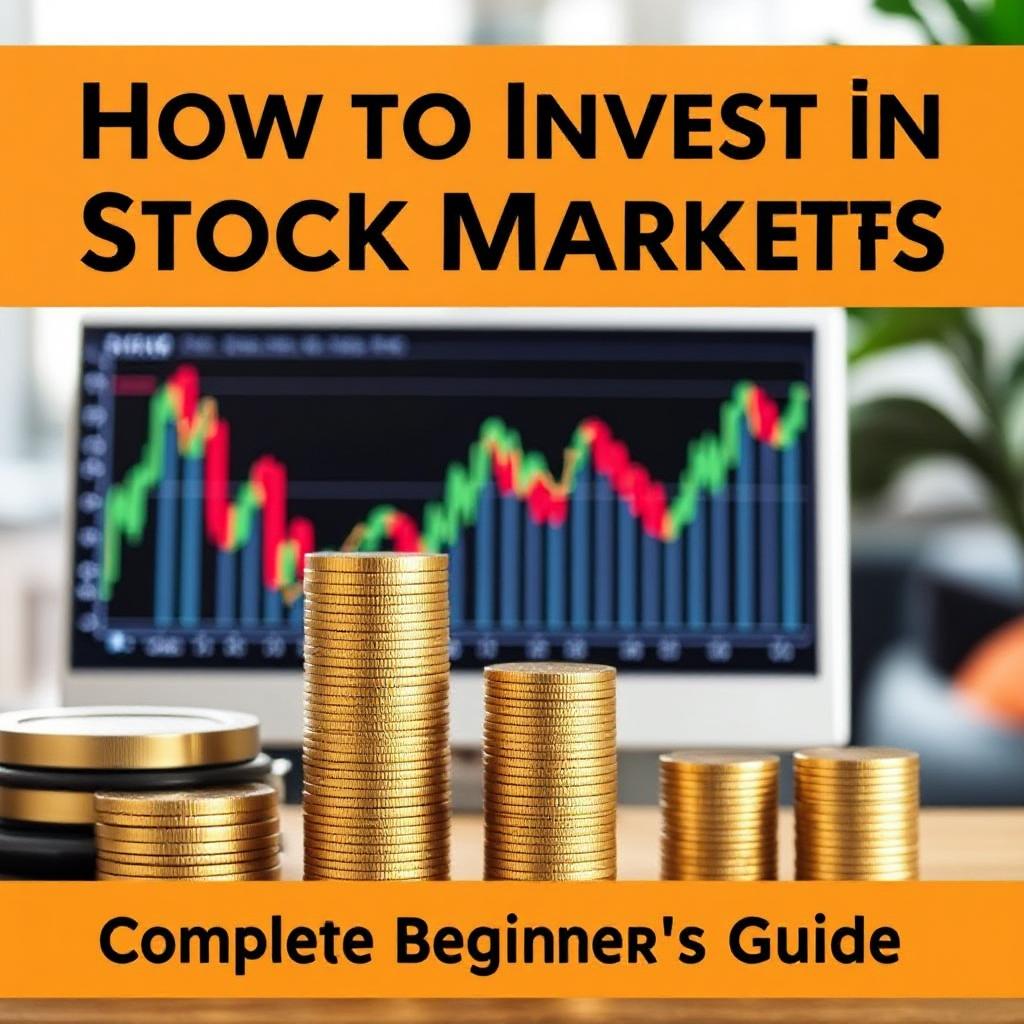
Investing in the stock market and ETFs (Exchange-Traded Funds) is one of the smartest ways to grow your wealth over time. Whether you’re looking to build a retirement fund, save for a major purchase, or generate passive income, understanding how to invest in stocks and ETFs is crucial.
In this complete guide, you’ll learn how to start investing in the stock market, what ETFs are, and how to choose the right investments — even if you’re a beginner. We’ll also explore popular platforms, strategies, and tools that can help you succeed.
📈 What Is the Stock Market?
The stock market is where shares of publicly traded companies are bought and sold. Investors can earn money through:
- Capital appreciation (when stock prices go up)
- Dividends (periodic payouts to shareholders)
By investing in the stock market, you’re essentially buying a piece of a company and sharing in its profits and growth.
💡 What Are ETFs and Why Are They Popular?
An ETF (Exchange-Traded Fund) is a type of investment fund that tracks a group of assets — like stocks, bonds, or commodities — and trades on a stock exchange like a regular stock.
🔹 Key benefits of ETFs:
- Diversification: Invest in hundreds of assets in one single fund.
- Low fees: ETFs usually have lower expense ratios than mutual funds.
- Liquidity: You can buy and sell ETFs anytime during market hours.
Popular examples include:
- SPY (S&P 500 ETF) – tracks the 500 largest U.S. companies
- VTI (Vanguard Total Stock Market ETF) – tracks the entire U.S. stock market
- QQQ (Nasdaq-100 ETF) – focuses on tech-heavy growth companies
🛠 How to Start Investing in Stocks and ETFs
1. Open a Brokerage Account
Choose a trusted online broker such as:
- Charles Schwab
- Fidelity
- Robinhood
- E*TRADE
- Webull
Look for features like:
- $0 commission trades
- Fractional shares
- Mobile app usability
- Educational tools
💡 Tip: Use platforms with ETF screeners and stock analysis tools for smarter decisions.
2. Define Your Investment Goals
Ask yourself:
- Am I investing for retirement, income, or capital growth?
- How much risk can I tolerate?
- What is my investment horizon (5, 10, or 20 years)?
Your answers will help guide your asset allocation between ETFs, individual stocks, and possibly bonds or REITs.
3. Understand the Different Types of ETFs
There are many types of ETFs to suit different goals:
| ETF Type | Purpose | Example |
|---|---|---|
| Index ETFs | Track a market index | SPY, VOO |
| Sector ETFs | Focus on specific industries | XLV (healthcare), XLE |
| Dividend ETFs | Generate income | VYM, SCHD |
| Thematic ETFs | Follow trends like AI, ESG, blockchain | ARKK, BOTZ, ICLN |
| Bond ETFs | Lower-risk income generation | BND, TLT |
4. Do Your Research: ETF & Stock Analysis
Before investing, analyze:
- Expense ratio (cost of managing the ETF)
- Historical performance
- Top holdings
- Dividend yield
- Volatility
Use tools like:
- Morningstar
- Yahoo Finance
- ETF.com
💰 Strategies for Building Wealth with ETFs and Stocks
🪙 Dollar-Cost Averaging (DCA)
Invest a fixed amount regularly, regardless of market price. This reduces the impact of market volatility and helps build discipline.
📊 Buy and Hold Strategy
Invest in diversified ETFs or blue-chip stocks and hold for the long term. It’s ideal for retirement investors or anyone who doesn’t want to actively trade.
🧠 Thematic Investing
Bet on future trends like artificial intelligence, green energy, or electric vehicles through thematic ETFs.
🔄 Rebalancing
Adjust your portfolio periodically to maintain your desired level of risk and return.
🧠 Tax-Efficient Investing Tips
- Use Roth IRAs or 401(k)s for long-term ETF investing.
- Choose ETFs over mutual funds for lower capital gains taxes.
- Harvest tax losses to offset gains from profitable trades.
📈 Popular ETF Picks in 2025 (High Demand & Growth Potential)
- VOO – Vanguard S&P 500 ETF
- VTI – Total U.S. Market
- ARKK – Innovation & Tech
- QQQ – Nasdaq 100 Growth
- VYM – High Dividend Yield
These ETFs offer a mix of stability, growth, and income, perfect for a diversified beginner’s portfolio.
📱 Tools and Apps for Smarter Investing
- M1 Finance: Automated investing with pie portfolios
- Personal Capital: Investment tracking and net worth dashboard
- Seeking Alpha: ETF and stock analysis articles
- Morningstar: Professional-grade fund analysis
- ETFDB.com: Compare ETFs by performance, fees, and holdings
🔚 Final Thoughts: Start Investing Today
The earlier you start investing in stocks and ETFs, the more you benefit from compound interest and long-term growth. ETFs are a powerful tool to build a diversified, low-cost, and profitable portfolio — even with a small amount of money.